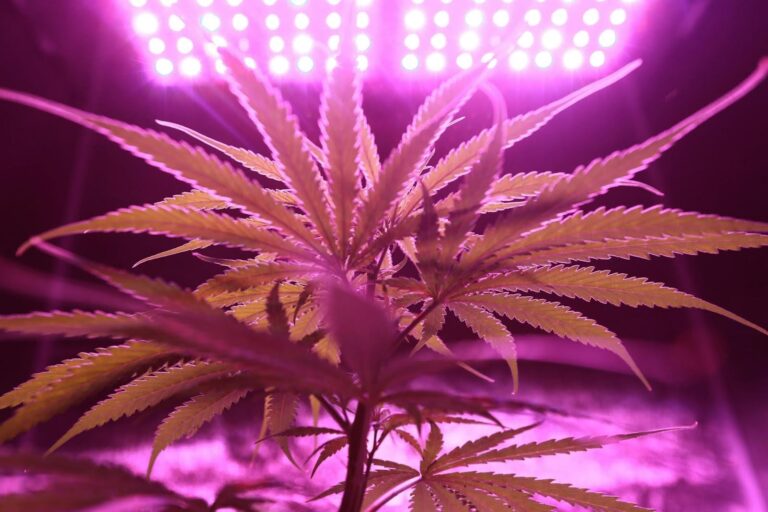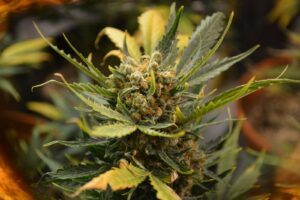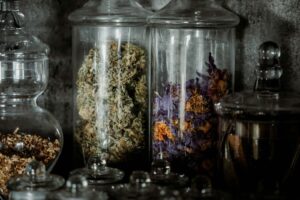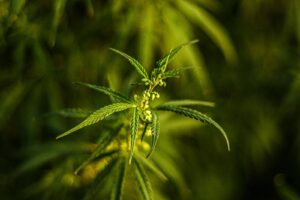Do you find it challenging to get the highest possible yields out of your cannabis plants? While light indeed plays a significant role in plant development, the quality of the light can make all the difference. Intensity, spectrum, and duration of exposure to light can substantially affect the outcome in your plants. Without optimal light conditions, your cannabis can lead to stunted growth, flimsy stems, or weak bud development.
By fine-tuning the light your plants get, you will achieve optimal photosynthesis and vigorous vegetative growth while getting dense, resinous flowers. Whether you own a home garden or have a large commercial gardening operation, mastering PPFD will help you get the best from your cannabis plants.
In this guide, we’ll explore how to master PPFD and adjust light conditions at each stage of cannabis growth to ensure your plants thrive and reach their full yield potential.
Understanding PPFD in Cannabis Growth
PPFD, or Photosynthetic Photon Flux Density, measures the light your plants receive per second in a given area. It directly influences photosynthesis by determining usable light energy your cannabis plants can absorb. The relationship between PPFD and light intensity is crucial because while more light can enhance growth, too much can stress plants and reduce yields. Here are some of the factors that influence PPFD in cannabis:
- Type of Grow Lights: Different lighting technologies, such as LEDs, HPS, or CMH, offer varying efficiencies in delivering the necessary PPFD levels.
- Light Distance: Adjusting the height of grow lights affects how much PPFD reaches the plants.
- Light Spectrum: The balance of blue, red, and other wavelengths influences plant development.
- Light Distribution: Proper placement and adjustment of lighting equipment ensure an even distribution of light, preventing shading issues that can impact plant growth.
- Reflectivity of Grow Space: Walls and surfaces with high reflectivity can help redirect light to lower and shaded parts of the plant, improving overall PPFD coverage.
- Duration of Light Exposure: The total photoperiod affects how effectively plants utilize available PPFD levels. Adjusting light schedules based on growth stages ensures efficient energy use.
Understanding and adjusting PPFD levels appropriately can create the ideal environment for healthy growth and ensure that plants reach their full genetic potential.
Now, let us understand the PPFD requirements for various cannabis growth stages in detail.
PPFD Requirements for the Cannabis Seedling Stage
Lorem ipsum dolor sit amet, consectetur adipiscing elit. Ut elit tellus, luctus nec ullamcorper mattis, pulvinar dapibus leo.
At the seedling stage, cannabis plants are delicate and require gentle light exposure. Too much light at this stage can cause stress, slow growth, or damage the tender leaves. Here are some of the proper requirements for cannabis seedling growth:
- Light Intensity: Hold the PPFD level at 100-300 μmol/m²/s to avoid stress and ensure constant growth.
- Environmental Conditions: Hold the temperature at around 70-78°F or 21-26°C and relative humidity at 65-70% to ensure healthy development
- Gradual Light Exposure: Providing light gradually at a lower intensity avoids stress and promotes steady leaf development.
- Lighting Schedule: Use an 18-24 hour light cycle to provide adequate energy, which does not “overwhelm” the young cannabis plants.
- Spectrum: Use cool white or full spectrum lighting to allow for balanced early growth and to avoid excessive stretch.
PPFD Levels for the Vegetative Stage
As cannabis plants enter vegetative, they require more light to support rapid foliage expansion and root development. During this stage, plants focus on building strong structural integrity, preparing them for the heavy flowering phase ahead. Here are some of the proper requirements for PPFD levels in vegetation:
- Light Intensity: 400 – 600 µmol/m²/s: A moderate light intensity allows for intensive stem and branch development without reaching the critical light intensity and inducing stress or light burn.
- Light Spectrum: Blue-rich light stimulates increased compactness, leaf size, and root strength.
- Duration of Light Exposure: Maintain 18 to 24 hours daily for healthy, continuing vegetative growth.
- Even Light Distribution: Even distribution of PPFDs will allow for symmetrical growth of all plants.
- Photosynthesis Efficiency: Adequate PPFD increases photosynthesis, improving plant health and readiness to flower.
- Control of Stretching: Balanced PPFD avoids excessive growing, creating a compact plant structure.
Light Intensity for the Flowering Stage
Cannabis plants need even more light during flowering to maximize bud development. A PPFD range of 600-900 μmol/m²/s provides the intensity necessary to drive photosynthesis and energy production, ensuring plants have the energy required to produce high-quality flowers. Here are some of the proper requirements for PPFD in flowering:
- Optimal Light Intensity: Higher PPFD supports bud formation; too low results in smaller, less dense flowers, while too high causes stress.
- Light Spectrum for Flowering: Emphasizing red and far-red wavelengths (620-750 nm) encourages flowering and bud growth.
- Light Duration and Photoperiod: A consistent 12/12 light cycle triggers and maintains flowering with minimal disruption.
- Canopy Light Distribution: Even light ensures all buds, including lower ones, receive sufficient light for optimal growth.
- Stress Avoidance: Avoid extreme PPFD changes, as stress can lower yields and affect plant health.
- Flowering Stretch: Proper PPFD supports the initial height increase during flowering, leading to strong flowers.
High PPFD levels help plants produce dense, resinous flowers. However, excessive light without proper environmental controls can cause bleaching or stress. Ensuring the right PPFD balance and appropriate temperature, humidity, and airflow management supports large, potent buds while preventing plant damage.
Stage | PPFD Range (µmol/m²/s) | Light Intensity | Light Spectrum | Light Duration | Additional Requirements |
Seedling Stage | 100-300 | Gentle light to prevent stress and promote growth | Cool white or full-spectrum light | 18-24 hours daily to support steady growth | Temperature: 70-78°F, Humidity: 65-70% |
Vegetative Stage | 400-600 | Moderate intensity for stem and branch development without stress | Blue-rich light for compact growth and strong roots | 18-24 hours daily for healthy vegetative growth | Even light distribution, control of stretching |
Flowering Stage | 600-900 | Higher intensity for bud formation and energy production | Red and far-red wavelengths (620-750 nm) to encourage flowering | 12/12 light cycle to maintain flowering | Even light distribution, stress avoidance, nutrient uptake efficiency |
So, how do you ensure proper light conditions for your cannabis plant to avoid stress? Let us find out.
Adjusting Light Conditions to Prevent Stress In Cannabis
Maintaining proper PPFD levels is not just about increasing intensity. It is also essential to monitor your plants for signs of light stress. Bleached or curling leaves may indicate excessive PPFD exposure, reducing photosynthesis and hindering growth.
Signs such as yellowing tips slowed growth, or leaf scorching can also suggest that light intensity is too high. Conversely, if plants appear weak, stretched, or pale, they may not be receiving enough PPFD. Striking the right balance ensures optimal energy absorption and prevents stress-related issues, allowing for steady, vigorous growth. Here are some of the strategies to prevent light stress in cannabis:
- Use Light Dimmers and Adjustable Fixtures: Light dimmers provide flexibility, allowing you to fine-tune intensity as plants grow and their light requirements change.
- Optimize Light Positioning: Adjusting the height of grow lights helps maintain the right PPFD levels across the canopy, preventing hotspots and uneven growth.
- Monitor Leaf Temperature: Excessive PPFD combined with high temperatures can stress plants. Keeping leaf surface temperatures within an optimal range (75-85°F) ensures healthy metabolism.
- Understand Daily Light Integral (DLI): Total light exposure throughout the day will prevent stress while maintaining maximum growth potential.
- Light Transition Strategy: Acclimation of light intensity that increases or decreases over time helps prevent shock during the transition from one growth stage to another. Use PlanCan’s interactive calendars to monitor your daily light schedule to plan transition strategies. Keep track of your light schedules, adjust the PPFD levels, and own the best yield in the market.
- Ensure Proper Air Circulation: Heat buildup from intense lighting can stress plants. Fans or ventilation systems help dissipate excess heat and maintain optimal growing conditions.
- Use Supplemental CO₂: When working with high PPFD levels, adding CO₂ enrichment (1,000-1,500 ppm) can help plants utilize the increased light effectively, improving photosynthesis and reducing light stress.
- Observe Responses of Plants: Different strains may possess different light tolerance. Regular assessment for signs of stress and modulation of light for optimal plant health and yield must be done.
Struggling to optimize light for different cannabis strains? PlanaCan helps detect issues early by tracking light and stress refining methods for better yields and higher profits.
So, how do you measure and control PPFD in your cannabis plant? Here’s how you can do that.
Measuring and Controlling PPFD
Accurately measuring light is crucial to achieving optimal PPFD levels for healthy cannabis growth. A PAR meter provides precise PPFD readings, helping you adjust light placement and intensity to ensure consistent exposure across the plant canopy.
Light mapping equipment and quantum sensors can better look at PPFD levels, meaning plants get an even distribution of efficient lighting. Similarly, here are some of the key methods for measuring and adjusting PPFD in cannabis:
- Use a PAR Meter: A reliable way to measure PPFD at different points in your growth space, helping you fine-tune light placement.
- Check Canopy Coverage: Uniform light to all parts of the plant will prevent growth inconsistencies and shaded spots.
- Adjust Light Height: Increasing or decreasing lights helps maintain stable PPFD levels without causing hotspots or light burns.
- Optimize Light Spacing: Positioning lights evenly across the grow space improves distribution and reduces the risk of overexposing or underexposing certain areas.
- Monitor Changes Over Time: As plants grow, their light requirements change, so constant adjustments are necessary to maintain ideal PPFD levels.
- Use Light Mapping Tools: Advanced tools like quantum sensors can help visualize and adjust the PPFD distribution for optimal results.
- Consider Reflective Materials: Utilizing reflective walls and surfaces helps distribute light more evenly, maximizing light efficiency.
- Ensure Even Light Coverage: Adjusting fixtures and using multiple light sources can prevent uneven PPFD distribution and shadowing.
As plants grow, their light needs change, requiring constant adjustments to maintain optimal PPFD levels. PlanaCan simplifies this by monitoring light conditions and capturing data from every harvest. This helps you connect decisions to results, refine your methods, and boost yields for greater profits.
Now, let us discuss special considerations for various cannabis growth stages.
Special Considerations for Various Cannabis Growth Setups
PPFD requirements may vary according to the growth setup. Home growers usually prefer LED lights with adjustable spectrums, as they consume less energy and can be adjusted to give the best light intensity and spectrum. These lights are perfect for smaller spaces and generate less heat.
Conversely, most commercial growers use HPS or CMH lights of very high intensity. They deliver much more light over a much larger area, making them ideal for most large-scale operations, even if they consume much more energy and produce much more heat. Factors that affect each cannabis growth setup:
- Space Size: Light placement in small grow spaces must be careful not to create hotspots, but large commercial grows need sufficient lighting spread across many plants for uniform growth.
- Lighting Technology: LEDs allow for better control over spectrum and intensity with minimal heat output, while HPS lights allow for high output but generally generate more heat, requiring improved heat management.
- Environmental Control: Confined spaces will cause heat management issues for home growers, while commercial setups incorporate sophisticated climate control systems to keep conditions optimal.
- Energy Efficiency and Cost: Energy efficiency results in long-term savings, while high-intensity discharge lights consume much more energy, making electricity more expensive and often requiring additional cooling.
- Plant Growth Stages: Clones and seedlings thrive on a lower level of PPFDs (100-300 μmol/m²/s), whereas the vegetative and flowering plant is on a gradually higher light intensity.
- Light Cycle Flexibility: Home growers are likely to alter the light cycles manually, whereas commercial applications utilize automated systems to maintain a standardized light cycle throughout the cultivation.
- Light Penetration: This requires supplemental lighting for lower canopy growth to maintain adequate exposure to every part of the plant in larger spaces.
- Plant Density and Layout: The more densely a plant arrangement is made, the denser the setup will be, so the lighting needs may be more intense or focused.
- Heat Management: Different lighting technologies produce different amounts of heat, affecting the room’s temperature and plant health. Effective heat management is crucial for small and large growth.
- CO2 Supplementation: Commercial growers use CO2 systems to enhance photosynthesis and grow faster, whereas home growers do not have the budget.
- Maintenance and Lifespan: LEDs typically have a longer lifespan and require less maintenance than HPS lights, which often need more frequent bulb replacements and checks.
Understanding these factors allows growers to tailor their lighting strategies for optimal plant health and yield, whether in a small home setup or a large-scale commercial operation.
Conclusion
Proper light intensity allows plants to thrive from seedling to flowering, supporting strong stems, strong root systems, and dense, resinous buds. Careful management of light exposure can foster optimal photosynthesis, avoid stress, and promote growth at every stage.
PlanaCan provides efficient tools for optimizing every aspect of a cannabis grower’s operation. You can create multiple customizable templates for each cultivation process, from planting through harvest. After creating templates, you can schedule work with a few clicks on the device. This streamlined approach saves time and ensures consistency across all cultivation cycles. Standardized workflows help growers become more efficient and reduce errors in their work while producing high-quality yields with little effort.
Schedule a free call today to learn how PlanaCan can help you optimize the process of cultivating cannabis.




